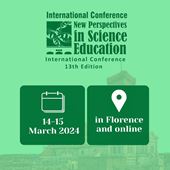Integrated STEM Professional Development: Utilizing Best Practices in an Online Format
Sarah Haines, Towson University (United States)
Sumreen Asim, Indiana University Southeast (United States)
Jeanna Wieselmann, Southern Methodist University (United States)
Deepika Menon, University of Nebraska- Lincoln (United States)
Abstract
This presentation will describe professional development activities that are part of a larger grant project with the overall goal of identifying links between integrated science, technology, engineering, and mathematics (iSTEM) teaching self-efficacy, teacher preparation and development opportunities, teaching effectiveness, and teacher retention among early-career elementary teachers. We are prioritizing project activities designed specifically to support the ongoing development of elementary teachers’ iSTEM teaching self-efficacy and effectiveness. Toward our objective of building a community of elementary teachers focused on improving their iSTEM teaching, we are conducting virtual professional development institutes, held in the summer months for the duration of the five-year project. These summer professional development institutes are designed using Desimone’s (2009) five critical features of effective professional development: content focus, active learning, coherence, duration, and collective participation. The content focus is fostered by inviting content experts to deliver key PD sessions. Active learning is built based on three-dimensional learning (disciplinary core ideas, science and engineering practices, and crosscutting concepts) targeting Bandura’s (1997) proposed sources of self-efficacy: mastery experiences, vicarious experiences, verbal persuasion, and emotional arousal. The foci of these workshops will vary each year but will maintain coherence through their connection to our qualitative and quantitative data analyses. Duration includes the number of PD hours, but also the time span of the program. Our summer PD institutes engage teachers in an initial synchronous online PD session, which is followed by independent work time to put their learning into practice. It concludes with a final synchronous online PD session where teachers share their asynchronous work, get feedback, and identify the next steps in enacting their learning in the classroom. In addition, the summer PD institutes will be held for four summers, providing a support community over an extended period. Finally, collective participation is fostered through the strategic use of online breakout rooms, collaborative activities, peer feedback, and a shared Canvas page that provides space for participants to share iSTEM teaching resources and provide ongoing support. These structures allow for authentic discourse, learning, and encouragement among teachers. We will share some of our strategies and content topics with conference participants.
|
Keywords |
Professional development, science education, elementary |
|
References |
(1) Desimone, L. M. (2009). Improving impact studies of teachers’ professional development: Toward better conceptualizations and measures. Educational Researcher, 38(3), 181–1999. (2) Bandura, A. (1997). Self-efficacy: The exercise of control. W H Freeman/Times Books/ Henry Holt & Co. |
 New Perspectives in Science Education
New Perspectives in Science Education





























